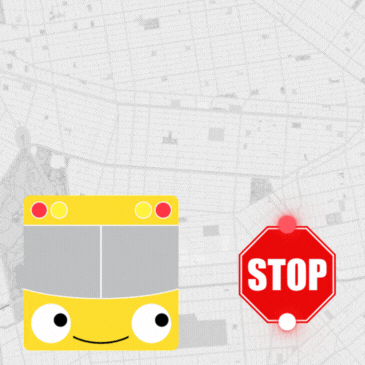
Weekly Story: The Meaning of Moshiachs’ Seudah – Bringing Moshiach in Our Life
by Rabbi Sholom Avtzon
This Shabbos is the 28th of Nissan, thirty-four years since the Rebbe said his famous sicha of, “I did whatever I can to bring Moshiach, and now I am giving it over to you.” The Rebbe then explained that his intent is not that we merely learn and discuss aspects about Moshiach and the era he will usher in, but we should live our lives, with a true feeling that our actions will usher in that era. In simple terms, we should bring Moshiach into our daily life.
Therefore, I decided to share some thoughts that I mentioned about this in a farbrengen on the 8th day of Pesach. As always, your feedback and comments are welcomed and greatly appreciated.
Additionally, it should be noted that this coming Wednesday is Beis (the second day of) Iyar, the 192nd birthday of the Rebbe Maharash, so at least on his birthday, one should say his new kapital (chapter of) Tehillim , which this years will be chapter 43.
In 5666 (1806), the Rebbe Rashab participated for the first time with the students of Tomchei Tmimim in the final seudah – meal of the Eighth Day of Pesach. During the seudah, he instructed all those present to drink four cups of wine, and he explained that this seaudah is called Moshiach’s Seudah.
For chassidim to eat a special meal at the end of Pesach was nothing new, in fact it was commonplace and in many Chassidic communities it is called the Baal Shem Tov’s seudah. The news was that it is connected with the coming of Moshiach and therefore we are to drink four cups of wine, just like we drink the four cops during the Seder when we commemorate Hashem redeeming us from mitzrayim.
I heard from Mashpiim, that the reason the Rebbe Rashab instructed us to drink four cups is because he wanted that this concept not be merely a spiritual exercise, but that it to come down in the physical world. By eating matzah and drinking the four cups of wine, they become part and parcel of our body.
To express this concept through a story, we know that in 5608, the Rebbe Maharash asked his father, the Rebbe the Tzemach Tzedek, why didn’t Moshiach come that year. The Tzemach Tzedek, replied, The Zeideh’s [the Alter Rebbe’s] sefer Torah Ohr was published that year. and that was a revelation of light and reachings of Moshiach. The Rebbe Maharash protested, but Moshiach himself did not take us out of golus! The same thing here, Moshiach should actually come down into this world and not remain as a concept in the spiritual worlds.
But the question becomes, what does it mean that we are to bring Moshiach into our world/life, while we are still in golus (exile)?
The Rambam writes that when Moshiach will be here, the only pursuit of a person will be to learn Hashem’s Torah and comprehend His essence.
The way a person can gain some comprehension of Hashem is through learning His Torah. I noticed in various shuls, that businessmen remain after Shacharis and learn for an hour or more. Their learning is a loud statement, while I have a business to run, for the next hour or two, my only interest is to understand Hashem’s wisdom, as He expressed it in His Torah.
Some may say only one who is self-employed or is the owner can make their schedule as they desire it to be. But most of us are employees and have to come to work at the time the boss demands, so we don’t have that ability to learn after davening, for an extended period of time.
However, the truth is that if you look around you will see that some who remain to learn after davening, daven in an earlier minyan, and then learn for an half hour or more, and only and only then, do they proceed to work. So we see that it is possible for all of us to make a statement that our only interest at this time is to comprehend Hashem’s wisdom and His essence.
This is similar to what happened when the Rebbe established mivtza Torah. At that time the focus was that everyone should have a set time to learn and without any interruption. The Rebbe’s chief secretary, Rabbi Hodakov, asked the Rebbe to designate a time that the Rebbe would not need him to respond to any questions and that is the time that he would be completely devoted to learning.
Another aspect of living Moshiach is from an incident that I heard about a carpenter who came to Montreal shortly after World War II. He worked every week on Monday, Tuesday and part time on Wednesday, and once in a while he also worked on Thursday.
Every Thursday (when he wasn’t working) and Friday he would spend his time in a shul or beis hamidrash, reciting Tehillim or learning. He explained, one has to cover their family expenses, but once I have enough for the week, I focus on what I should be focusing on, my family and strengthening my connection to Hashem.
While this person is very unique and special, we all can learn from him; we have to know what is our priority and that is to live our lives in accordance to the Torah and its mitzvos.
A practical application of this is, one has to realize that davening with a minyan and having a set time to learn every day, is not a contradiction to serving Hashem properly. By davening at home in order to take care of their livelihood etc., one is making a statement that it is difficult to live a fully observant lifestyle and earn a decent livelihood simultaneously. Whereas, when the person davens with the minyan, the statement is that my livelihood comes from Hashem, and therefore I daven properly, knowing that Hahem will provide.
A Taste of Chassidus Vayehi Bayom Hashimini 5734
In the previous two weeks we wrote what the Rebbe had explained that we will be mentioning the miracles of Yetzias Mitzrayim (our redemption from the bondage of mitzrayim) even when Moshiach comes and redeems us from this final exile. Even though the miracles that will occur then, will be much greater than those that were performed for us when we were redeemed from mitzrayim. The reason why they would still be noteworthy is because then the Jews overcame a negative thought and followed Hashem.
In Chassidic terminology overcoming a negative thought is called iskafyu, which is accomplished only through utilizing the power of the sphere of Netzach – victory. [When one is at battle, and desires to be victorious they throw all their power and assets to succeed, (as discussed at length in the Maamar Basi Lgani]].
The same concept was explained last week concerning the splitting of the sea; although the splitting of the River which would be done by Moshiach will be much greater than what was revealed by Moshe with the splitting of the sea, nevertheless, we will mention it even after Moshiach splits the River.
There too it is evident that the Jews were only able to subject their evil inclination and did not annihilate it completely. As our sages state, a maid saw by the sea Hashem’s essence. But she is still called a maid, if she annihilated her evil inclination completely, wouldn’t she be an exalted individual and not be referred to as a maid. Additionally, if everyone was so exalted, why didn’t they all merit to become prophets? So at that time the vast majority of Jews were on the level of iskafya, and when Moshiach comes we will be on the level of Ishapcha [transforming the enemy (negative force) into becoming a friend and ally].
However, as will see that not only is there an importance to the service of Iskafya which takes place during this golus, but it is much more than that. The avodah of now (Iskafya), is what gives us the strength and ability to serve Hashem when Moshiach comes on the higher level of Ishapcha.
When we received the Torah, we attained at that time the highest level possible. We had no connection or association with anything impure or evil. However, that lasted only for a short period of time, as forty days later we created and served the Golden Calf. Even our phenomenal saying of Naaseh Vnishma -.we will do and we will listen, demonstrates that we did not refine the evil inclination, rather we subjected it to allow us to fulfill Hashem’s commandments. Only when.Moshiach comes will anything evil no longer exists, as it will be refined.
But the way to reach and attain that lofty level is by first controlling and subjecting it, until we bring it to the point that it itself no longer desires evil. So we see that our service off Iskafya is what brings us and enables us to attain the lofty level of Ishapcha, which will be when Moshiach comes
Another example of this concept is:
We see that throughout the year a mincha (flour) offering is not allowed to be chometz. However, on Shavuos we bring two mincha offerings that are chometzdik (like regular bread).
The reason for this is, presently we are battling the evil inclination that it should not influence or have any affect upon us. As noted, that is the service of Iskafya. Subsequently, we are not able to bring a mincha offering that is chometz, as chometz symbolizes negative forces which we are careful to distance ourselves from.
However, through our perseverance in standing up and not allowing it to sway us, this steadfast service, is what elevates us and brings us to the era of Moshiach when we will be doing the service of Ishapcha, utilizing the negative forces also to serve Hashem, then we can utilize chometz
This is symbolized by the deference between the flour offerings of Pesach and Shavuos. On Pesach we bring Korban Hu’Omer is brought from barley, which is fodder for animals. Whereas, on Shavuos we bring a korbon from wheat. This symbolizes the elevation of our conduct and behavior. At the beginning, before we work to refine ourselves, our conduct may be termed as “animalistic,” however, after working on improving ourselves we attain the higher level that our actions are “human.”
Rabbi Avtzon is a veteran mechanech and the author of numerous books on the Rebbeiim and their chassidim. He is available to farbreng in your community and can be contacted at avtzonbooks@gmail.com.













Mushkie
Drinking 4 cups of wine at moshiach’s Seuda – shouldn’t the drinking be done while leaning (b’hesiba) to show cheirus and geulah, like at the seder? If the concept of drinking 4 cups was copied from the seder, why not take it complete – with leaning?!
Rabbi Sholom Avtzon
It is copied because the 4 cups represent the four level if redemption or the four levels of punishment given to the Egyptians. So too there will be these 4 levels when Moshiach redeems us from this golus. However, being that have not yet merited that and we are still in golus, we don’t recline.
This concept is alluded in Shacharis, we say Emes 4 x in Viyatziv (mitzrayim) and 4 x in Ezras Moshiac
Mushkie
A few in my group keep asking: the last days of pessach celebrate kriyas yam suf (not the exodus from mitzrayim), so why bring in the 4 cups which are connected to the first days of pessach? No disrespect meant, but it’s like saying shake the lulav at moshiach’s seudah (for didan natzach)